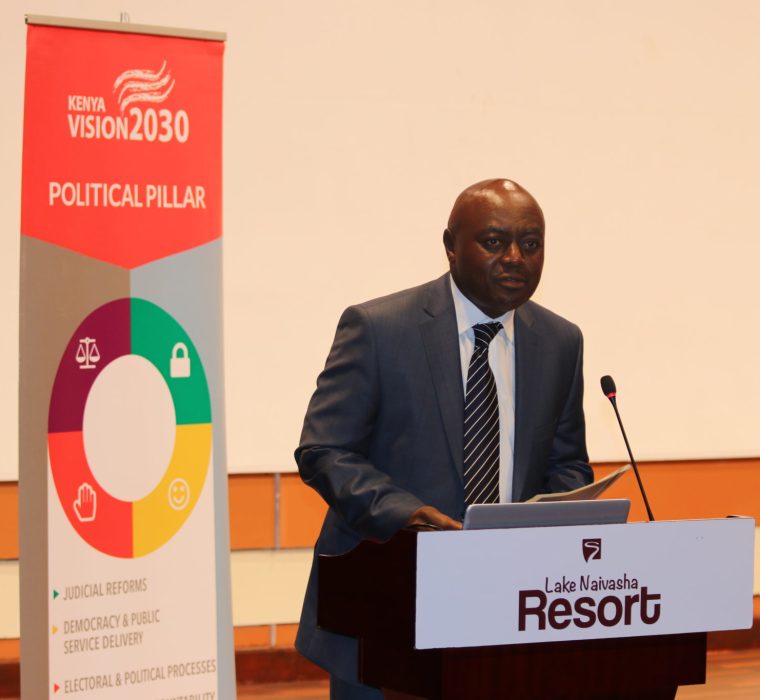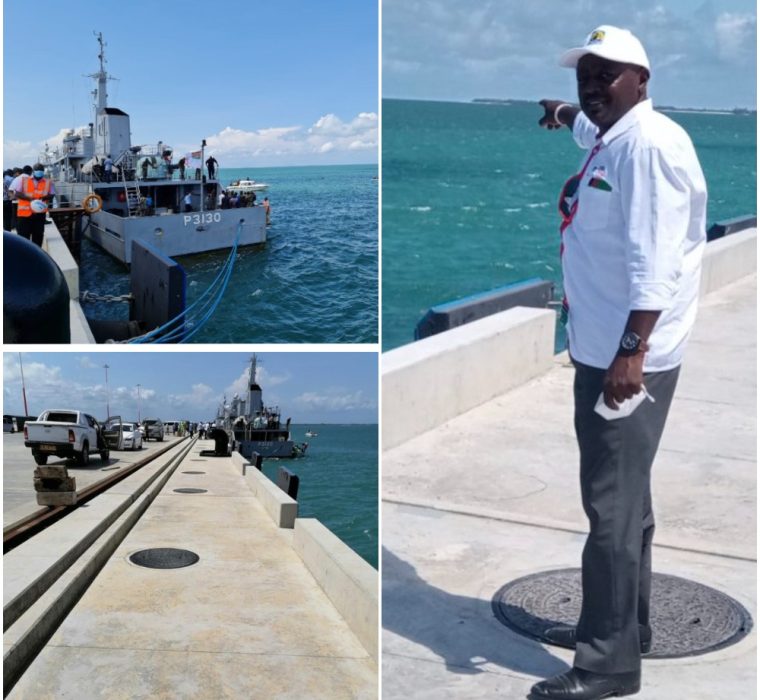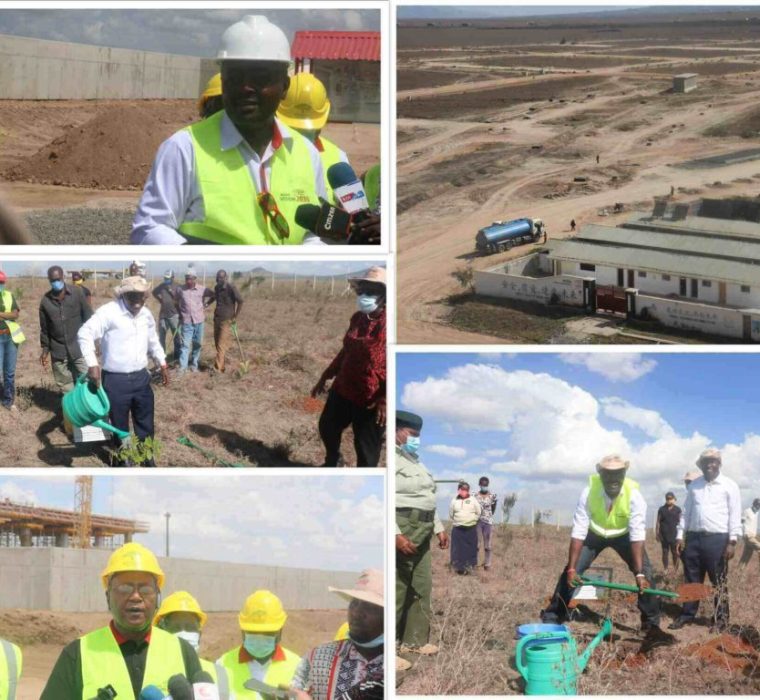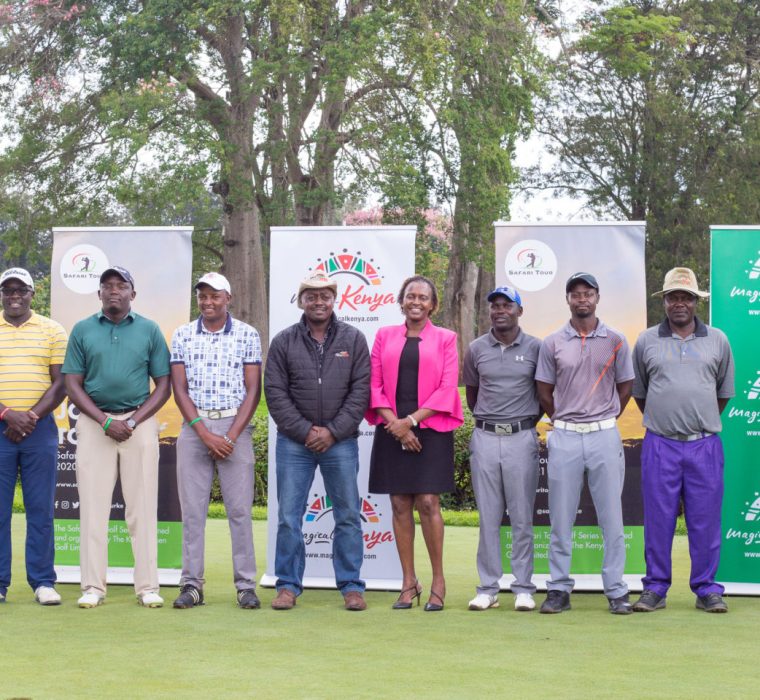
Kenya Vision 2030
It is motivated by a collective aspiration for a better society by the year 2030. The aim of Kenya Vision 2030 is to create “a globally competitive and prosperous country with a high quality of life by 2030”. It aims to transform Kenya into “a newly-industrialising, middle income country providing a high quality of life to all its citizens in a clean and secure environment”.

Seeing the vision through
Let’s take you back to the formative years of the country’s vision by looking at what informed the Kenya Vision 2030 through the voices of the pioneers speaking about what inspired them to answer the call and take part in creating the long-term development blueprint for the country.
The progress so far…
- 2017
- 2016
- 2015
- 2014
- 2013
- 2012
- 2011
- 2010
- 2009
- 2008
-
Infrastructure
An ultra-modern inland container depot upgraded at a cost of Sh 22 Billion was launched. Madaraka Express was also launched serving both passengers and cargo. The Oil Jetty in Kisumu was commissioned, creating an alternative regional oil export option across Lake Victoria. It revives the lake petroleum transport infrastructure that collapsed in 1977 when the EAC acrimoniously wound up. The modernised Isiolo Airport was also launched.
-
Security
The Government acquired 3 new choppers and 30 armoured personnel carriers to support ground operations, 3,672 vehicles for the National Police Service, 492 vehicles the National Administration Police and an additional 5,000 motorbikes for Chiefs. 36,000 additional police officers were recruited trained and deployed, bringing Kenya in line with United Nations guidelines of 1:450 ratio of police to civilians. 2016 also the development of the Second Container Terminal and Commissioning of the construction Phase 21 of the Standard Gauge Railway from Nairobi to Naivasha.
-
Health and Education
The Managed Equipment Service was launched, providing Kenyans access to uninterrupted quality healthcare services nationwide by equipping 2 hospitals in each county and the 4 referral hospitals with the 5 recommended classes of equipment; ICU/HDU Equipment, Renal (Dialysis) Equipment, Sterilization and Surgical sets, Imaging and Radiology Equipment and Theatre Equipment. 2015 also saw the introduction of the Digital Learning Programme and crucially the launch of the Last Mile Connectivity Programme that included the electrification of all Public Primary Schools. Outer Ring Road was also commissioned.
-
Public Sevice Reform
By leveraging on technology, government has revolutionized how citizens access its services making it much easier to bring services closer to the people, cutting delivery time and securing revenues paid for such services. As a gateway to all government services, the eCitizen portal has seen the progressive addition of different agencies enabling Kenyans and foreign nationals to access services digitally. There are 197 different public services offered under the eCitizen portal and these include passport applications, visa applications, driving license renewals, vehicle registration, business registration, company searches and applications for certificates of good conduct.
-
Devolution
Decentralization kicks off with the election of Governors as Government shifts power, authority, resources, and responsibilities from the National Government to County Governments. 2013 also saw the launch of the Free Maternity Programme, Commissioning of Mombasa Port Berth 19 and the launch of Phase 1 of the Standard Gauge Railway from Mombasa to Nairobi. Additionally, Huduma Centres, ‘one-stop shop’ to access and pay for government services electronically were launched in order to cut corruption and bureaucracy.
-
Thika Superhighway Commissioned.
President Kibaki commissioned Thika Road whose development was expected to reduce general transport costs, improve on accessibility to public transportation, create employment opportunities, housing and recreation activities. The superhighway connects Nairobi to Marsabit, Isiolo, Moyale and Mandera. It also provides a reliable route, connecting Kenya with Ethiopia and Tanzania in the north and south, respectively.
-
Governancy and Rule of Law
Development of legislation and administrative procedures required to implement the constitution with the enactment of Urban Areas and Cities Act, 2011; County Governments Act, 2012; Transition to Devolved Government Act, 2012; Intergovernmental Relations Act, 2012 and Public Finance Management Act, 2012), National Government Coordination Act 2012 and County Governments Public Finance Transition Act 2013, Establishment of Transition Authority and Commission on Revenue Allocation.
-
The New Constitution
Promulgation of the New Constitution replaced the old Constitution that had been in place since Independence in 1963.
-
Transforming Connectivity & Transmission
East African Marine System (TEAMS) fibre optic cable landed in Mombasa, placing Kenya on the superhighway to major technological take-off. SEACOM, a privately-funded fibre optic project, also landed, setting the stage for cheap internet connectivity and enhanced communications in the country.
-
Kenya Vision 2030 Launch
President Mwai Kibaki launched Vision 2030 as a vehicle for accelerating transformation of our country into a rapidly industrialising middle-income nation by the year 2030
Our Pillars
This bold vision is anchored on this key pillars each essential in steering Kenya’s growth and ensuring a path to sustainable prosperity and inclusivity.










